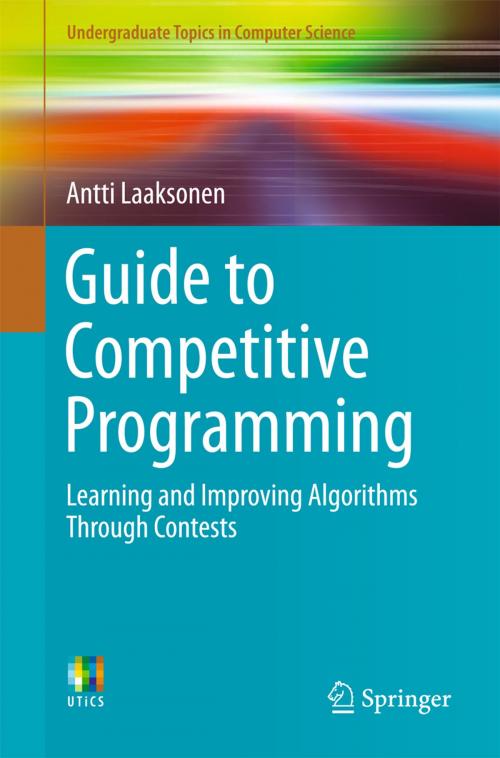Guide to Competitive Programming
Learning and Improving Algorithms Through Contests
Nonfiction, Reference & Language, Education & Teaching, Teaching, Computers & Technology, Computers, General Computing, Programming| Author: | Antti Laaksonen | ISBN: | 9783319725475 |
| Publisher: | Springer International Publishing | Publication: | January 2, 2018 |
| Imprint: | Springer | Language: | English |
| Author: | Antti Laaksonen |
| ISBN: | 9783319725475 |
| Publisher: | Springer International Publishing |
| Publication: | January 2, 2018 |
| Imprint: | Springer |
| Language: | English |
This invaluable textbook presents a comprehensive introduction to modern competitive programming. The text highlights how competitive programming has proven to be an excellent way to learn algorithms, by encouraging the design of algorithms that actually work, stimulating the improvement of programming and debugging skills, and reinforcing the type of thinking required to solve problems in a competitive setting. The book contains many “folklore” algorithm design tricks that are known by experienced competitive programmers, yet which have previously only been formally discussed in online forums and blog posts.
Topics and features: reviews the features of the C++ programming language, and describes how to create efficient algorithms that can quickly process large data sets; discusses sorting algorithms and binary search, and examines a selection of data structures of the C++ standard library; introduces the algorithm design technique of dynamic programming, and investigates elementary graph algorithms; covers such advanced algorithm design topics as bit-parallelism and amortized analysis, and presents a focus on efficiently processing array range queries; surveys specialized algorithms for trees, and discusses the mathematical topics that are relevant in competitive programming; examines advanced graph techniques, geometric algorithms, and string techniques; describes a selection of more advanced topics, including square root algorithms and dynamic programming optimization.
This easy-to-follow guide is an ideal reference for all students wishing to learn algorithms, and practice for programming contests. Knowledge of the basics of programming is assumed, but previous background in algorithm design or programming contests is not necessary. Due to the broad range of topics covered at various levels of difficulty, this book is suitable for both beginners and more experienced readers.
This invaluable textbook presents a comprehensive introduction to modern competitive programming. The text highlights how competitive programming has proven to be an excellent way to learn algorithms, by encouraging the design of algorithms that actually work, stimulating the improvement of programming and debugging skills, and reinforcing the type of thinking required to solve problems in a competitive setting. The book contains many “folklore” algorithm design tricks that are known by experienced competitive programmers, yet which have previously only been formally discussed in online forums and blog posts.
Topics and features: reviews the features of the C++ programming language, and describes how to create efficient algorithms that can quickly process large data sets; discusses sorting algorithms and binary search, and examines a selection of data structures of the C++ standard library; introduces the algorithm design technique of dynamic programming, and investigates elementary graph algorithms; covers such advanced algorithm design topics as bit-parallelism and amortized analysis, and presents a focus on efficiently processing array range queries; surveys specialized algorithms for trees, and discusses the mathematical topics that are relevant in competitive programming; examines advanced graph techniques, geometric algorithms, and string techniques; describes a selection of more advanced topics, including square root algorithms and dynamic programming optimization.
This easy-to-follow guide is an ideal reference for all students wishing to learn algorithms, and practice for programming contests. Knowledge of the basics of programming is assumed, but previous background in algorithm design or programming contests is not necessary. Due to the broad range of topics covered at various levels of difficulty, this book is suitable for both beginners and more experienced readers.















